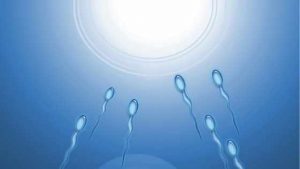
Overview
The Reproduction Process
Reproduction involves several complex processes that must occur at exactly the right time. If there is an interruption in any of these steps, conception may not take place.
Each partner has an important role in the reproductive process. Women are born with roughly 2 million oocytes (eggs). These eggs were actually created when the woman was in her mother’s uterus, during the first trimester of her very own conception. During a woman’s reproductive life span, only about 500 of these eggs will be successfully ovulated. It is important to acknowledge however, that every woman has a portion of chromosomally abnormal eggs which correlates with the age at which the egg is ovulated. As women age, the percentage of chromosomally abnormal eggs which are ovulated increases. For most women, one egg is released each month from one of the two ovaries into the nearby fallopian tube. Fertilization occurs in the fallopian tube. Sperm from the male ejaculate passes from the vagina through the cervix, then into the uterus, and ultimately journeying into the fallopian tube. Millions of sperm are lost along this pathway. Sperm work together to break down the zona pellucida (similar to an egg shell), and fertilization occurs when ultimately one sperm penetrates the mature egg. The fertilized egg (now called an embryo), then travels from the fallopian tube into the uterus, where if the embryo successfully implants into the receptive uterine lining and is chromosomally normal (and at times abnormal, such as in the case of Down Syndrome), has the chance to continue to develop into a viable fetus.
What Is Infertility?
According to The World Health Organization, infertility is a disease of the reproductive system, defined by the failure to achieve a clinical pregnancy after 12 months of regular unprotected sexual intercourse under the age of 35, and 6 months of trying for age 35 and older. It is estimated that 85% of couples will conceive within one year. Therefore, infertility appears to affect roughly 15% of the population worldwide. The probability of becoming pregnant for a young healthy couple is 20-25% each month. If a couple is not pregnant within a year, the probability of achieving a pregnancy within one menstrual cycle drops to roughly 3% per month.
Who Gets Infertility?
Infertility is a medical problem that affects approximately 1 in 8 couples. Approximately 30% of infertility is due to a female factor and 30% is due to a male factor. In the balance of the cases, infertility results from problems in both partners or the cause of infertility cannot be explained.
When To See a Specialist?
In general, if you’re under the age of 35 and have not gotten pregnant within 12 months of having unprotected vaginal intercourse, or if you’re 35 or older and have not gotten pregnant within 6 months of having unprotected vaginal intercourse it is time to schedule an appointment with a fertility specialist. If you are a same-sex couple or single person interested in parenthood, we at Davies Fertility and IVF Specialists are more than happy to assist you. Learn more here.
Explore Infertility Topics
- Female Infertility
- Male Infertility
- Secondary Infertility
- Unexplained Infertility
- When to See a Fertility Specialist
- Preserving Your Fertility
Davies Fertility & IVF Specialists can help with infertility issues in both men and women. Click here to schedule an appointment.
